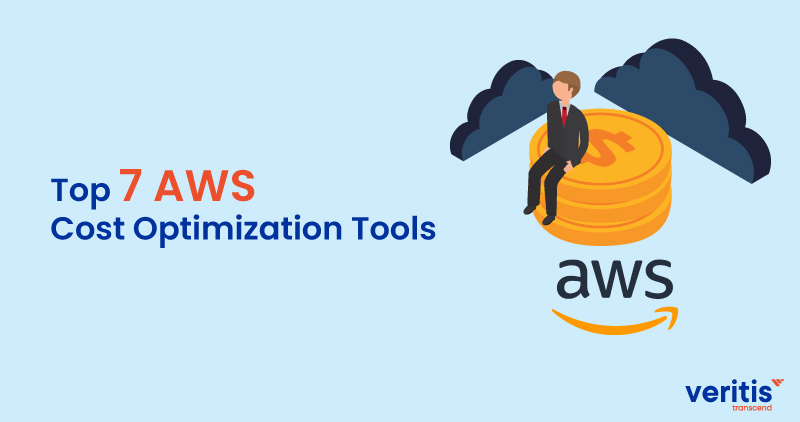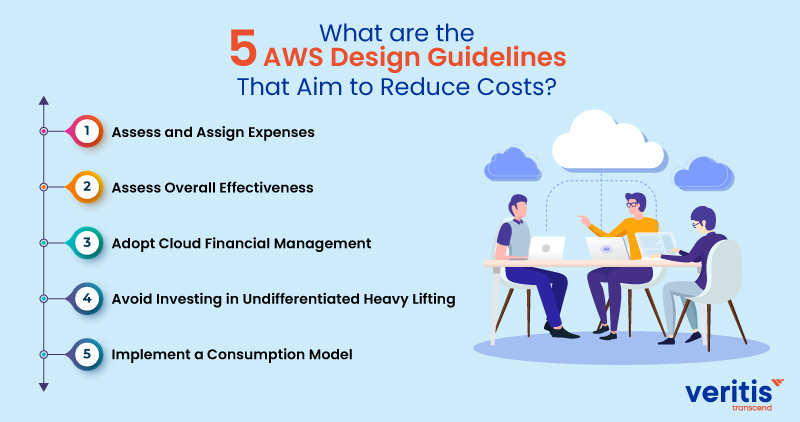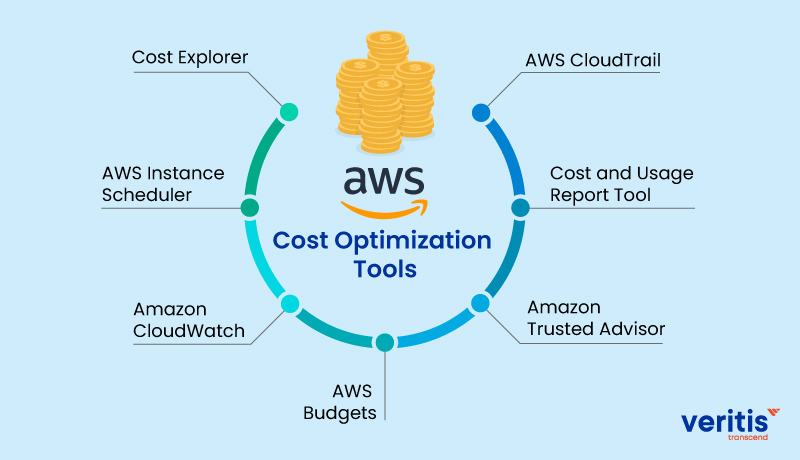
Cost optimization is just one of the many advantages that Amazon Web Services offers its customers. However, Amazon’s cost optimization could be more challenging to handle than you initially anticipated. For example, it might be simpler for businesses that were “innate” in the cloud, but what about businesses that “migrated”? By introducing management, governance, and automation, these users increased their costs of managing on-premises infrastructures.
Many businesses are switching to the platform as a service, infrastructure as a service, and software as a service model for their applications and services. As a result, understanding your cloud bill and budget on cloud providers such as Amazon Web Services is becoming essential because a sizeable portion of IT budgets are being diverted to them.
As per the 2024 stats, 80% of IT decision-makers emphasize the importance of cloud cost optimization, indicating a widespread focus on controlling spending across various platforms like AWS. (Source: CloudHealth)
As per the 2024 stats, a survey shows that 74% of companies utilize a mix of cloud cost management tools, with 58% recognizing the significance of using both platform-specific and generic tools, including those provided by AWS. 73% of organizations actively employ cloud cost management tools, highlighting their perceived value in optimizing expenses. (Source: Flexera)
As per the 2024 stats, 42% of IT decision-makers foresee AI and machine learning playing a significant role in future cloud cost optimization strategies, signaling a trend toward advanced analytics and automation within platforms like AWS. (Source: CloudHealth)
AWS cost management best practices have developed into a distinct field of study with specialized tools, economic models, and best practices for cost reduction. While Amazon has several advantages over traditional on-premises infrastructure, its built-in elasticity and scalability often result in unmanageable prices.
AWS charges can quickly erode your profit margins without a system to identify the sources of the costs and how to control them. AWS costs can be opaque and challenging to monitor. Numerous solutions have developed during the past few years to guide companies in optimizing their costs. This blog post will examine some of the best AWS optimization tools available from AWS cost optimization services and outside vendors.
Talk To Our Cloud Computing Consultant
How Come AWS is so Pricey?
AWS’s cloud platform offers more than 200 services. Cloud optimization tools are flexible, and their costs might be challenging to estimate and control.
The following are the primary reasons for waste and excessive prices on AWS cost optimization services:
- You are paying for instances you don’t need while using services like Amazon EC2 because the compute instances are underutilized.
- EBS volumes, snapshots, load balancers, and other resources that are not in use but still cost money even when not used.
- Spot instances and reserved instances, which can offer savings of 50% to 90%, are not employed when appropriate.
- Savings Plans are seldom utilized, even though they can help you cut compute costs by agreeing to a minimum overall Amazon spend.
- Auto-scaling is neither implemented nor ideal; for instance, as demand rises, you scale up too much (adding redundant resources).
Useful link: Top 15 AWS Machine Learning Tools in the Cloud
What are the 5 AWS Design Guidelines That Aim to Reduce Costs?

The AWS Well-Architected Framework suggests five design guiding principles for AWS cost management. The following is a list of the guidelines:
1) Assess and Assign Expenses
Clouds can assist you in ideally identifying the cost and utilization of systems, enabling transparent attribution of IT costs to specific task vendors. They provide ROI measurement, aid task owners in resource AWS optimization, and lower expenses.
2) Assess Overall Effectiveness
This principle advises measuring the business output of a particular workload and all associated costs. Then, you can use this information to determine the benefits of raising output and cutting expenses.
3) Adopt Cloud Financial Management
With IT cost optimization or cloud financial management, you can hasten the realization of business value and achieve financial success with AWS cloud optimization tools. However, it entails allocating time and money to develop capability by creating processes, resources, programs, and knowledge.
4) Avoid Investing in Undifferentiated Heavy Lifting
Amazon handles operations in data centers, including racking, powering servers, and stacking. In addition, AWS cost management tools provide managed services to lessen the effort of running and maintaining operating systems and applications. These services relieve you of IT infrastructure tasks so you may concentrate on clients and commercial endeavors.
5) Implement a Consumption Model
AWS cloud cost optimization advises paying for the necessary computer resources and varying usage based on business requirements. For instance, staff members typically use development and testing environments throughout a workweek for eight hours each day. Stopping unused resources could result in up to 75% cost savings.
Useful link: Managing Kubernetes Applications Through Terraform and AWS EKS
The Foundations of AWS Cost Optimization

1) Optimize Storage
AWS has various storage tiers, each of which delivers a different level of performance for a different price. Therefore, choosing the best location for particular data types may reduce storage requirements while maintaining the necessary performance and availability. For instance, you can utilize Amazon EBS Throughput Optimized HDD (st1), less expensive than General Purpose SSD, if your performance requirements are lower (gp2).
2) Identify, Track, and Enhance
Given the dynamic nature of cloud environments, you must set up measurements and monitor them to ensure accurate visibility and ongoing cost reduction. Setting up cost allocation tagging and enforcing it will accomplish this. Define metrics, establish precise goals, and regularly review the data. Assign optimization duties to specific people or teams and use training, visualization, and incentives to assist teams in designing for cost.
3) Proper Size
The resources you provide must meet your standards and demands. For instance, you should allocate CPU, storage, network throughput, and memory for computation.
4) Use the Appropriate Pricing Model
The pricing options provided by AWS cost management tools include spot instances, reserved instances, and on-demand pricing. Your chosen pricing plan should enable IT cost optimization depending on your workload demands. Reserved instances are suitable for workloads known in advance.
5) Enhance the Elasticity
IT hardware is typically turned off infrequently. The cloud cost optimization model enables you to minimize expenditures to match fluctuating needs by shutting resources off when they are no longer required.
Useful link: Securing the Future: AI Automation Tools in Cybersecurity
Benefits of AWS Cost Optimization Tools

AWS Cost optimization tools offer businesses invaluable insights and strategies to streamline expenditure and maximize return on investment. By providing comprehensive visibility into spending patterns and resource utilization, these AWS cloud optimization tools empower organizations to identify and eliminate inefficiencies, ultimately reducing overall cloud expenses.
Additionally, through resource right-sizing and Reserved Instance optimization, firms can ensure that their cloud resources are optimally matched to workload requirements, minimizing unnecessary costs while maintaining performance levels. Overall, AWS Cost optimization tools enable businesses to achieve greater cost efficiency and financial control in their cloud operations.
1) Cost Visibility and Analysis
Discuss how AWS Cost optimization tools provide insights into spending patterns, allowing businesses to identify areas of overspending or inefficiency through detailed cost breakdowns and analysis.
2) Resource Right-sizing
Highlight the benefits of AWS cloud optimization tools for right-sizing resources. These tools enable businesses to match instance types and sizes to their workload requirements, minimizing underutilization and over-provisioning costs.
3) Reserved Instance Optimization
Explain how AWS Cost optimization tools help manage Reserved Instances effectively, including recommendations for purchasing and modifying Reserved Instances to maximize cost savings while meeting performance needs.
4) Usage Monitoring and Alerts
Discuss the importance of AWS tools for monitoring usage and setting up alerts for cost anomalies or unexpected spikes in expenditure. These tools allow businesses to take proactive measures to control costs and avoid bill shocks.
5) Automation and Optimization Recommendations
Emphasize the value of AWS reporting tools in providing automated optimization recommendations, such as identifying idle resources, optimizing storage usage, or implementing cost-saving strategies like spot instances or scheduled scaling to improve cost efficiency without continuous manual intervention.
Useful link: What is Generative AI: An Ultimate Guide to Amazon Generative AI Tools
AWS Cost Optimization Best Practices
1) Identify Amazon EC2 Instances with Low Usage
The Resource Optimization report from Amazon Cost Explorer displays EC2 instances that are not being used or are being used inefficiently. Stopping or changing these instances to a reduced instance size will reduce costs. Amazon Operations Conductor’s automated instance scheduling and the AWS Instance Scheduler’s automatic instance termination are further options.
The Amazon Compute Optimizer provides further suggestions for EC2 instances. For instance, it could advise downsizing instances among instance families or switching to more powerful instances to avoid performance snags. It may also suggest how best to use Auto-Scaling groups.
2) Sell or Use Unused Reserved Instances
Reserved Instances on Amazon can drastically save prices, but only if you utilize them. Therefore, using unused reservations is crucial to protect your investment.
When a reserved instance becomes available, you can utilize it for a new application or an existing one currently using more expensive on-demand instances. However, should this not be the case, you can sell your RIs on the Reserved Instance Marketplace.
3) Use Amazon EC2 Spot Instances to Save AWS Costs
Spot Instances are a crucial component of the AWS cost-reduction plan and can save EC2 expenses by up to 90% if your workload is fault-tolerant. Spot instances may terminate with two minutes’ notice is the main restriction. Typical workloads include big data, containerized workloads, continuous integration/delivery (CI/CD), web servers, and development/testing.
Using Amazon’s Spot Fleet functionality, you may run spot and on-demand instances in the same Auto Scaling group while reserving some on-demand instances that cannot be interrupted for crucial components.
Useful link: 8 IT Cost Optimization Tactics for CIOs
AWS Cost Optimization Tools

Cost optimization is something that practically every client will need to accomplish, and AWS reporting tools are aware of this. As a result, they have succeeded in developing multiple tools and services to manage cloud cost optimization spending after many years of expertise
The following 10 Amazon cost optimization tools are all free to use, while some of them also include commercial features:
1) Cost Explorer
AWS Cost Explorer is a tool that aids in cost and consumption data visualization through an interactive and user-friendly interface. Data from AWS Cost Explorer is used to assess cost and usage across all AWS pricing model accounts, spot trends in cost consumption, and spot usage peaks.
Data from the last 12 months are presented to you via the tool, conveniently accessible through your choice analytics tool.
2) AWS Instance Scheduler
The Amazon instance scheduler utility assists you in automatically halting Amazon Relational Database Service (RDS) and Amazon EC2 instances using information from Cost Explorer. As a result, Amazon Web Services EC2 can be scaled and scheduled according to your anticipated usage pattern, demands, and requirements.
3) Amazon CloudWatch
CloudWatch assists you in setting alarms for particular resource levels by considering a range of metrics from your Amazon services.
For instance, you could create an alarm to alert you if the percentage of your EC2 instances drops below 40%. Then, you can quickly assess instance underutilization after being alerted by the alarm, investigate it, and proportionally resize or combine the workloads.
4) AWS Budgets
You can establish the budget for particular Amazon services using AWS Budgets. Additionally, the budget can be linked to specific data that boosts efficacy. Finally, you can receive emails or messages from the Simple Notification Service (SNS) to notify you of AWS Budget occurrences.
Usage Example: You can set up an overall budget for the entire account or a specific resource, like using numerous Amazon EC2 instances or the Amazon CloudFront CDN.
5) Amazon Trusted Advisor
Amazon Trusted Advisor provides various functionalities, including enhancing security and performance, lowering overall costs, and optimizing your AWS infrastructure.
This examines your Amazon setup and offers best practice advice on service restrictions, performance, cost-cutting, security, and fault tolerance.
Automatic Recommendations for Cost-Saving
- Optimizing EC2 reserved instances
- EC2 instances are only partially used
- Elastic load balancers that are idle
- Underused EBS volumes
- Elastic IP addresses without any connections
- Database instances on Amazon RDS that are not in use
6) Cost and Usage Report Tool
The Cost Usage and Report tool for Amazon Web Services (AWS) provides a detailed report of your AWS cloud cost optimization, consumption, service pricing, and other information on an hourly, daily, or monthly basis.
7) AWS CloudTrail
While on the go, you can manage, track, and log reports from your Amazon Web Service using CloudTrail. This tool informs you of any unusual spikes in activity that can raise costs and enable you to take appropriate action.
Conclusion
The options for AWS cost optimization are numerous, and choosing one might be difficult. While waste reduction and purchase strategies, such as reserved instances, have traditionally been the focus of cost optimization, many progressive businesses now emphasize engineering enablement and architectural optimization more.
Businesses understand that cost optimization entails giving engineering teams the cost intelligence they need to make cost-effective development decisions and lowering the AWS pricing model.
Veritis, the Stevie Award winner, is the cost intelligence platform that may assist you in cost optimization and more if you seek a comprehensive AWS cost optimization solution. To know more about Veritis, get a demo right away.
Got Questions? Schedule A Call
Additional Resources:
- AWS vs Azure vs GCP: Cloud Cost Comparison
- The 5-Step Strategy to Manage and Optimize Public Cloud Costs
- Cloud Cost Optimization and Management
- Which AWS Cloud Management Tools Should You Use to Manage Your Business
- Accelerate Business Growth with AWS Cloud Migration
- AWS DevOps Services – Drive your DevOps Journey with AWS Seamless Flow